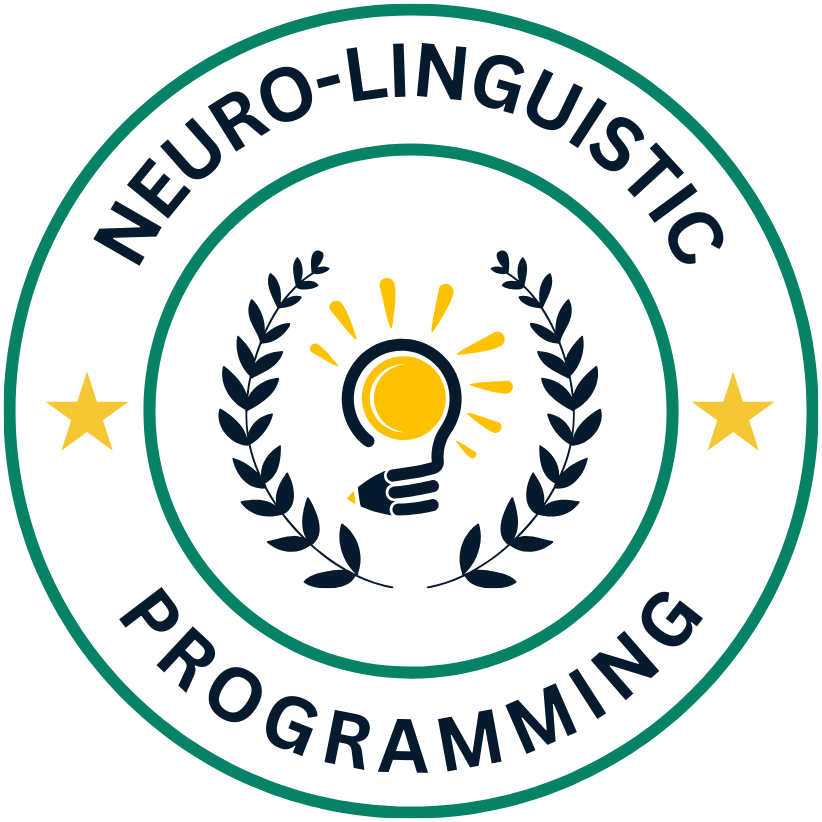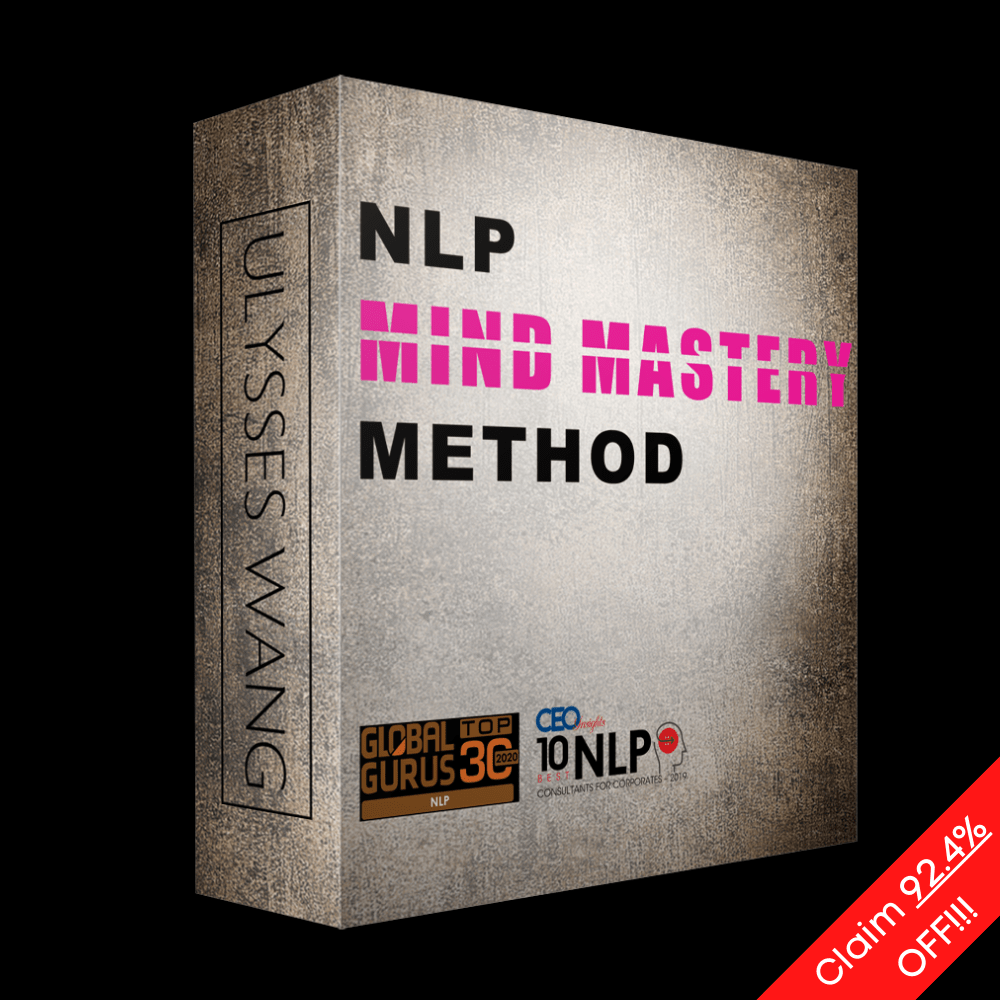Guide your coaching practice to new heights by integrating Neuro-Linguistic Programming (NLP) techniques into your sessions. In this beginner’s guide, you will discover how NLP can transform your approach, enhance client engagement, and lead to measurable improvements in their results. You’ll learn key strategies to apply NLP concepts effectively, empowering you to unlock the potential within both you and your clients. Dive into the world of NLP and elevate your coaching outcomes today.
Understanding NLP in Coaching
Your journey into the world of coaching can be significantly enhanced by incorporating Neuro-Linguistic Programming (NLP). This approach emphasizes the connection between neurological processes, language, and behavioral patterns developed through experience. By understanding how these elements interact, you can improve your coaching techniques and facilitate deeper transformations in your clients.
What is NLP?
There’s a fascinating intersection between thought, language, and behavior that NLP explores. Essentially, NLP is a methodology originating in the 1970s, created by Richard Bandler and John Grinder. It investigates how people can achieve their goals by modeling successful behaviors, communication styles, and thought patterns. As a coach, you can leverage these insights to provide tailored support to your clients, helping them break through limiting beliefs and reach their full potential.
Key Principles of NLP
An effective NLP practice is built on several foundational principles that can dramatically enhance your coaching approach. These principles include the belief that the map is not the territory, the importance of understanding sensory experience, and the idea that flexibility leads to better outcomes. By adopting these principles, you open yourself up to a deeper understanding of your clients’ mental frameworks and behavior patterns, allowing you to guide them more effectively in their personal growth.
Understanding the key principles of NLP enables you to craft more personalized coaching experiences. Each individual has their unique perspective—recognizing that your client’s experience of reality is shaped by their mental models can help you adjust your coaching strategies. This responsiveness not only builds rapport but also fosters a safe environment where clients feel empowered to explore their challenges and possibilities.
Types of NLP Techniques for Coaches
Some effective NLP techniques can significantly enhance your coaching practice. Here are some of the most common types you might consider integrating into your sessions:
| Technique | Description |
|---|---|
| Anchoring | Associating a physical gesture with a desired emotional state. |
| Swish Pattern | Changing the way you think about a problem by visualizing a desired outcome. |
| Meta Model | A questioning technique designed to clarify vague language and expand thinking. |
| Reframing | Changing your perception of an event to create a more empowering interpretation. |
| Mirroring | Building rapport by mimicking the body language of your client. |
Knowing how to use these techniques effectively can lead to enhanced results in your coaching sessions.
Visual Techniques
Types of visual techniques in NLP focus on utilizing mental imagery and visual associations. These methods can be particularly useful when helping clients visualize their goals and dreams. Techniques like guided imagery allow you to help clients create vivid mental pictures of their desired outcomes, which can be powerful motivators for achieving those goals.
By integrating visual techniques, you can help clients strengthen their belief systems and reinforce positive changes in their mindset. Utilize tools such as vision boards or metaphors that resonate visually, enabling clients to tap into their creativity and clarify their aspirations.
Auditory Techniques
You can also engage your clients through auditory techniques, which emphasize the importance of sound and language in communication. This may include techniques such as active listening, where you attentively capture and reflect back what your client is saying, fostering a deeper connection and understanding. Additionally, techniques like auditory anchoring can help clients associate specific sounds or phrases with desired emotional states.
Auditory techniques can be particularly powerful when it comes to changing limiting beliefs or enhancing self-talk. By guiding your client to replace negative internal dialogue with empowering affirmations or supportive sounds, you can aid them in creating a more positive mindset.
Techniques such as auditory rehearsal involve encouraging clients to verbalize their affirmations or goals. This repetition helps solidify their new beliefs, allowing them to internalize the positive changes they are working towards.
Kinesthetic Techniques
Now, kinesthetic techniques focus on the physical sensations and emotions that influence your client’s experiences. This allows you to help them become more aware of their body’s responses to different situations and thoughts. Techniques like anchoring can also be applied here by associating a physical touch or movement with a particular emotional state, fostering a new pathway for emotional regulation.
By using kinesthetic techniques, you encourage your clients to engage with their bodies in ways that can reveal hidden emotions and facilitate change. This might involve activities such as role-playing or physical movement exercises, helping them embody new perspectives and feelings.
To deepen the effectiveness of kinesthetic techniques, involve clients to explore their physical responses and sensations through movement or touch. This can lead to a more holistic understanding of their feelings and empower them to create lasting change in their lives.

Step-by-Step Guide to Implementing NLP
After you have familiarized yourself with the basic principles of NLP, it’s time to put those insights into action. The implementation process can be structured into clear, manageable steps that will help you seamlessly integrate NLP techniques into your coaching practice. Here’s a simple breakdown of these steps:
| Step | Description |
|---|---|
| 1. Setting Goals with NLP | Define what you want to achieve using NLP techniques in your coaching sessions. |
| 2. Developing Rapport | Establish a strong connection with your clients to facilitate better communication. |
| 3. Completing the Change Process | Ensure that the change you want to instigate is fully realized and sustained over time. |
Setting Goals with NLP
Implementing NLP effectively begins with setting clear, achievable goals. This process involves identifying specific outcomes you wish to attain with your clients. Take the time to engage with them about their aspirations and challenges. Focusing on well-defined goals provides you with a framework that directs your sessions and helps you measure progress. Use SMART criteria—Specific, Measurable, Achievable, Relevant, and Time-Bound—to structure these objectives effectively.
Additionally, employing techniques such as the ‘well-formed outcome’ can help you and your client visualize the desired state. Encourage them to articulate their goals in a positive language, allowing them to feel empowered and motivated. The clarity gained during this phase will provide a solid foundation as you move forward in your coaching journey.
Developing Rapport
Any successful coaching relationship relies heavily on the rapport you build with your clients. To foster a genuine connection, prioritize attentiveness and empathy in your interactions. Begin by actively listening to your client’s concerns and opinions, creating a safe space for open dialogue. This reciprocity will make your clients feel valued and understood, which is important for effective coaching.
Moreover, consider employing mirroring techniques, where you subtly mimic your client’s body language, speech patterns, and tone to create a sense of familiarity. This non-verbal communication can significantly enhance trust levels and make your clients more comfortable expressing themselves. When your clients feel at ease, they are more likely to engage deeply with the coaching process.
Understanding these elements can significantly enhance your coaching practice. Rapport isn’t just about creating a friendly atmosphere; it’s about laying the groundwork for honest communication and true collaboration.
Completing the Change Process
One of the key aspects of implementing NLP in coaching is ensuring that your clients successfully complete the change process. This stage involves not only supporting clients through their transformational journey but also helping them solidify these changes in their daily lives. Check in on the progress of their goals and guide them in overcoming any obstacles they may encounter along the way.
Encourage your clients to engage in self-reflection, allowing them to appreciate the strides they’ve made. Consider using NLP techniques such as anchoring, where you help clients create strong associations with their new behavior, further solidifying the changes in their mindset and actions moving forward.
Rapport plays an important role in ensuring success during the change process. When clients trust you and feel understood, they are more likely to embrace the necessary adjustments in their lives, leading to profound and lasting transformations.
Tips for Effective NLP Coaching
Unlike traditional coaching methods, NLP opens up a wealth of techniques that can significantly enhance your coaching practice. To enjoy the full benefits of NLP, consider implementing these effective strategies:
- Engage in active listening to fully understand your clients.
- Tailor your techniques to the unique needs of each client.
- Use language patterns effectively to encourage positive change.
- Establish rapport and trust with your clients from the outset.
- Continuously assess and adapt your approach as needed.
Any combination of these tips will help you create a nurturing and effective coaching environment.
Active Listening
You must develop the skill of active listening to truly connect with your clients. This means paying close attention not just to the words they say, but also to their tone, body language, and the emotions behind their statements. By demonstrating that you value what they share, you not only build rapport but also gain important insights into their thought processes and feelings, which can guide your coaching strategies.
In practice, active listening can involve summarizing what your client has said to ensure you have understood correctly or asking open-ended questions that encourage deeper exploration of their thoughts. This technique is especially valuable in NLP coaching, as it allows you to identify specific patterns and triggers that might be impacting your clients’ lives. By genuinely engaging in their narrative, you cultivate a supportive coaching relationship that fosters growth and transformation.
Tailoring Techniques to Clients
Clearly, every client has their own unique experiences, challenges, and aspirations. When coaching, it’s crucial that you adapt your NLP techniques to align with their specific situations and personal styles. This might mean customizing your language, employing different NLP models, or utilizing varied modalities that resonate with your client. By being flexible in your methods, you can create a customized coaching experience that is far more effective.
Plus, by gathering feedback from your clients about what works and what doesn’t, you can adjust your approach in real-time. This iterative process ensures that clients feel heard and understood, ultimately leading to a deeper transformational experience. You’ll also find that this personalized touch not only increases client satisfaction but can also enhance your reputation as an effective and responsive NLP coach.
Factors to Consider When Using NLP
Not every coaching practice will benefit equally from incorporating Neuro-Linguistic Programming (NLP) techniques. It is important to evaluate several factors before entering into NLP practices to ensure they align with your coaching objectives and your clients’ needs. Consider the following:
- Your client’s unique background and experiences
- The specific outcomes your client is looking to achieve
- The level of NLP training and expertise you possess
- Any potential resistance from clients toward NLP methods
- The appropriateness of timing in applying NLP interventions
This will lead to a more effective integration of NLP strategies into your coaching process. For further insights into how NLP can enhance your coaching, check out Neuro-Linguistic Programming: Your Tool for Success in a Coaching Environment.
Client Readiness
While assessing your client’s readiness for NLP techniques is significant, it’s important to foster an open dialogue about their willingness to explore new methods. Some clients might be more inclined to embrace change than others, and understanding their comfort level can guide you in tailoring your approach. Engaging with your client about any previous experiences with NLP or similar techniques can provide valuable insights into their adaptability and expectations.
Additionally, consider your client’s goals and motivations. If they exhibit enthusiasm for personal growth and demonstrate a commitment to implementing change, they are likely more prepared to engage with NLP strategies. As a coach, adopting a flexible mindset and encouraging your clients to express their feelings will ensure a smoother transition into NLP work.
Ethical Considerations
Assuming you’re considering integrating NLP into your coaching practice, it’s vital to approach it ethically. This means respecting your clients’ autonomy, ensuring informed consent, and maintaining a professional boundary throughout your sessions. Transparency is important; keeping your clients informed about the techniques and strategies you employ fosters trust and encourages a collaborative environment.
Consider the potential impact of your NLP interventions on your clients’ well-being. Always prioritize their needs and preferences, and be vigilant in identifying any signs of discomfort or misalignment with their goals. An ethical coaching relationship will not only facilitate more successful outcomes but will also encourage long-term development and growth for your clients.
Pros and Cons of NLP in Coaching
Many coaches and clients alike are embracing Neuro-Linguistic Programming (NLP) as a powerful tool to enhance coaching outcomes. However, understanding both the advantages and drawbacks is vital for you to make an informed decision about integrating NLP into your practice. Below is a breakdown of the pros and cons of using NLP in coaching:
| Pros | Cons |
|---|---|
| Improves communication skills | May require extensive training |
| Encourages a positive mindset | Effectiveness varies by individual |
| Fosters self-awareness | Can be seen as manipulative |
| Facilitates quicker behavioral change | Lacks extensive scientific validation |
| Promotes goal-setting techniques | May oversimplify complex issues |
| Enhances rapport with clients | Not universally accepted in coaching |
| Provides practical tools for coaching | Can require adaptation to different clients |
| Supports a holistic approach to personal development | Success may depend on client willingness |
Benefits of NLP
There’s a compelling range of benefits that NLP can offer you as a coach. By leveraging specific NLP techniques, you can significantly improve your communication skills and establish a deeper rapport with your clients. This creates an environment where clients feel more open and willing to explore their challenges, leading to enhanced self-awareness and personal growth.
There’s also the potential for NLP to facilitate quicker behavioral changes. Utilizing methods like reframing and anchoring, you can guide your clients through mental blocks and limiting beliefs, enabling them to set and achieve their goals more effectively. As a result, your coaching sessions can become more impactful, allowing you and your clients to celebrate achievements more frequently.
Potential Limitations
Any approach to coaching must consider its limitations, and NLP is no exception. One of the key challenges is the varying effectiveness of NLP techniques among different individuals. While some clients may find immense benefit from NLP strategies, others may not resonate with them at all, leading to inconsistent results.
Plus, the perception of NLP can also be a hurdle. Some may view it as manipulative or simplistic, impacting your credibility as a coach if clients are skeptical. Additionally, the lack of universally accepted scientific validation for some NLP techniques may cause hesitation for those looking for evidence-based practices in coaching. Understanding these nuances will help you navigate the integration of NLP into your coaching approach and set realistic expectations for both you and your clients.
Summing up
Hence, by integrating Neuro-Linguistic Programming (NLP) into your coaching practice, you can significantly enhance your ability to connect with clients and facilitate transformative outcomes. With the techniques and insights outlined in this guide, you are equipped to better understand and tap into the thought patterns that influence behavior and decision-making. By applying NLP strategies, you can not only foster effective communication but also help your clients overcome mental barriers, expand their potential, and achieve their goals more efficiently.
As you initiate on this journey of incorporating NLP into your coaching toolkit, you have the opportunity to elevate your practice beyond traditional methods. Embrace the tools and techniques discussed here to create tailored experiences that address the unique needs of your clients. This personalized approach will not only benefit those you coach but will also enrich your own professional development, allowing you to maximize your impact as a coach and guide.
FAQ
Q: How can NLP enhance my coaching practice?
A: NLP, or Neuro-Linguistic Programming, provides a framework for understanding how individuals process information and how their thought patterns influence behavior. By incorporating NLP techniques into your coaching practice, you can tailor your approaches to better suit the unique needs of your clients. This can lead to improved communication, more effective goal-setting, and the ability to facilitate deeper transformations. Understanding NLP can help you develop strategies that align with clients’ cognitive styles, fostering a more significant impact on their personal and professional growth.
Q: Is NLP suitable for all types of coaching?
A: Yes, NLP principles can be adapted for various coaching styles and niches, including life coaching, executive coaching, and performance coaching. Regardless of your coaching focus, the insights and techniques from NLP can enhance your ability to connect with clients and address their specific challenges. NLP helps coaches create a more personalized experience, as its tools can be modified to fit the context of any coaching relationship, enabling you to support your clients in achieving their desired outcomes effectively.
Q: What are some practical NLP techniques I can start using immediately?
A: There are several NLP techniques you can easily implement in your coaching sessions. One popular technique is “anchoring,” where you help clients establish positive emotional states by associating them with specific gestures or words. Another effective approach is “reframing,” which allows clients to view their challenges from new perspectives, promoting creative solutions. Visualization exercises can also be beneficial, encouraging clients to imagine their goals vividly. These techniques are just a few examples, and as you explore NLP further, you’ll find a wealth of tools designed to enhance your coaching effectiveness.



